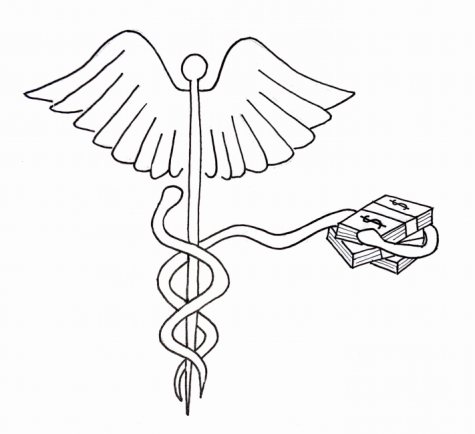Marin’s inequality turns health care into health ‘scare’
December 17, 2020
Health care. There it is: the two words that set off every heated political debate. One side of the aisle passionately shouts for its universality while the other side raises their fist in demand for its privatization. Those two words are quintessential in every political argument, whether it is between family members, or aired live during presidential debates. While the opposing beliefs often kickstart fiery disputes, both sides must acknowledge an undeniable truth: America’s healthcare system is not equal across the country’s diverse demographics. The United States, especially Marin County, must become more proactive in combating the inequalities of health care.

Marin County is a prime example of the disparities in access to health care. A County of Marin’s News Release in 2019 stated that inequalities in access to health insurance are tied to income levels. In a county where wealth is concentrated within the white population, access to health care is, in fact, determined by race.
Despite being ranked the healthiest county in California for the past nine years, Marin County’s Department of Health and Human Services stated that in 2017, Marin had the highest level of racial inequities — less access to opportunity such as better schools, higher income and most notably, health care. That same release reveals that people of color in Marin die younger than white residents; the life expectancy for Black, Latinx and Asian residents is 75, 80 and 81 years respectively, whereas the life expectancy for White people is 83 years. How long you live should not be based on race, but this is how it appears to be in Marin.
Since the start of the COVID-19 pandemic, inequalities in health care access in Marin have been brutally exposed. The Canal District is a prime example of how the pandemic has torn through the less wealthy communities in comparison to those around it. Canal Alliance, a nonprofit that works to “break the generational cycle of poverty for Latinx immigrants,” studied the stark differences in COVID-19 cases based on racial and ethnic demographics in Marin. According to the study, which took place in early September, Latinx individuals, who comprise approximately 16 percent of Marin’s entire population, made up 80 percent of Marin’s COVID-19 cases. This was the largest imbalance of cases based on race in California. So why does Marin have such sizeable disparities based on race and wealth in both access to health care and COVID-19 cases?

This is because so many of the Canal District’s residents are Latinx families seeking lower-cost housing and manual work, so they are more at risk of being exposed to the virus and not obtaining adequate treatment. According to National Public Radio, lower-income jobs are less likely to cover health insurance for their employees. Therefore, low-income earners are less likely to receive health care, medical aid and accurate medical information surrounding public health crises such as the COVID-19 outbreak from their employers. In order to bridge the health care gap, community leaders need to continue looking into solutions that expand access to health care. This is especially relevant now as we watch the virus ravage lower-income neighborhoods in Marin, which could have been prevented had there been equal access to health care.
One solution could be to provide tax incentives to smaller businesses that rely on blue-collar workers if they supply their employees with health insurance. Unfortunately, these incentives are more difficult to administer at a local level, so this change would rely on the cooperation of the state government to prevent furthering health care disparities. While the Internal Revenue Service provides tax credits to small businesses that cover health insurance for their employees, it has not been successful in aiding the lower-income workers of Marin County. California must do more to ensure that all its residents have access to health care.
While some may argue that providing these tax incentives would unnecessarily increase taxes for California residents who are not in need of this service, the fact remains that Marin’s essential workers are fundamental to its economy. By performing the tasks that many of the wealthier Marinites are unwilling to do themselves, essential workers put their lives at risk to keep their jobs and make ends meet for their families.
Moreover, according to the Urban Institute, a nonprofit that conducts policy research, when more people have access to health care, health care insurance rates tend to decrease. Therefore, increasing access to health care is not only beneficial to its recipients but could decrease the health care costs for everyone else.
While there have been some efforts over the years to equalize Marin’s health care system, COVID-19 has proven that disparities in access to adequate medical treatment and information still affect the county. If we want to address the racial biases of our health care system, we need to push for our local and state governments to prioritize bridging the health care gap so that every person in Marin has access to the care they deserve.























